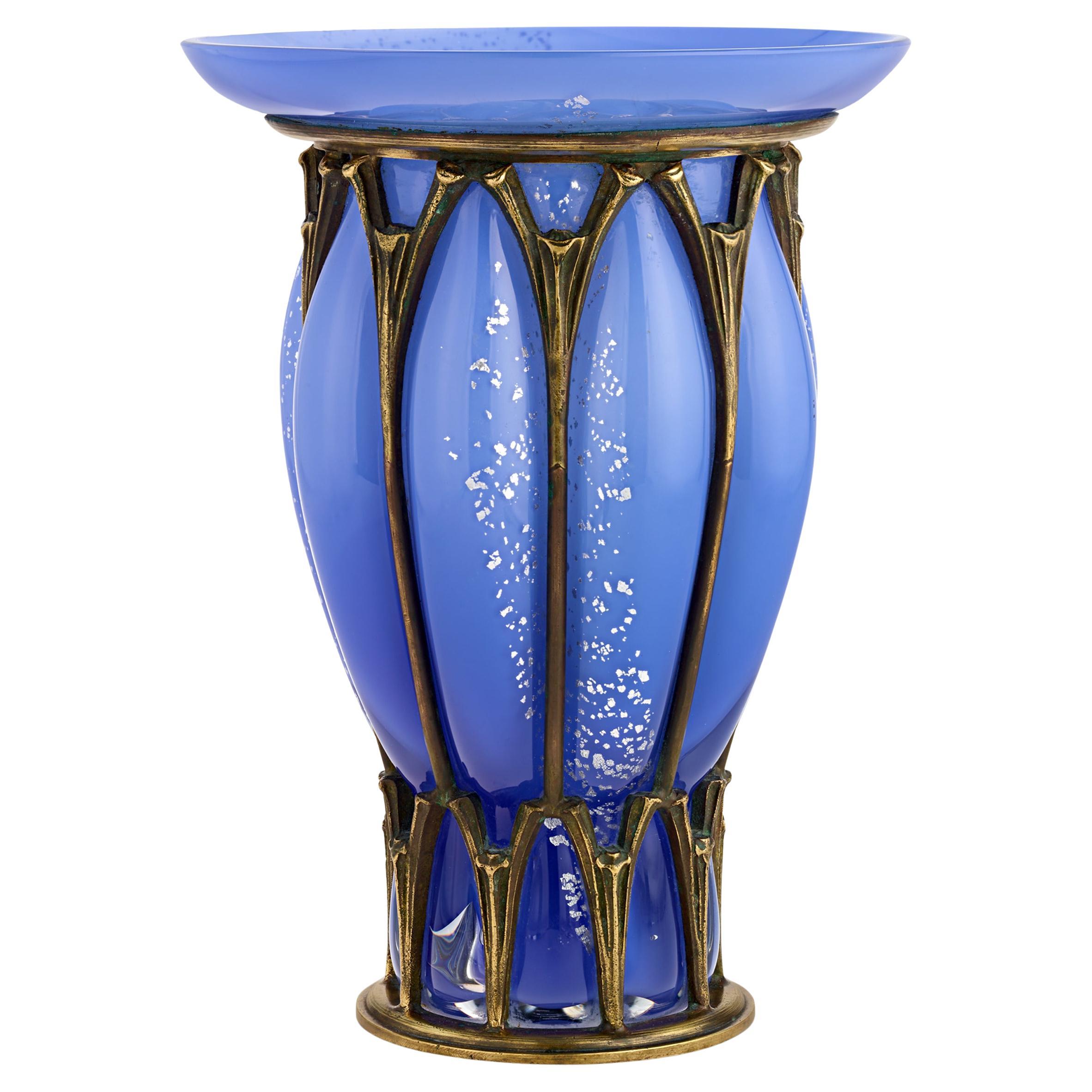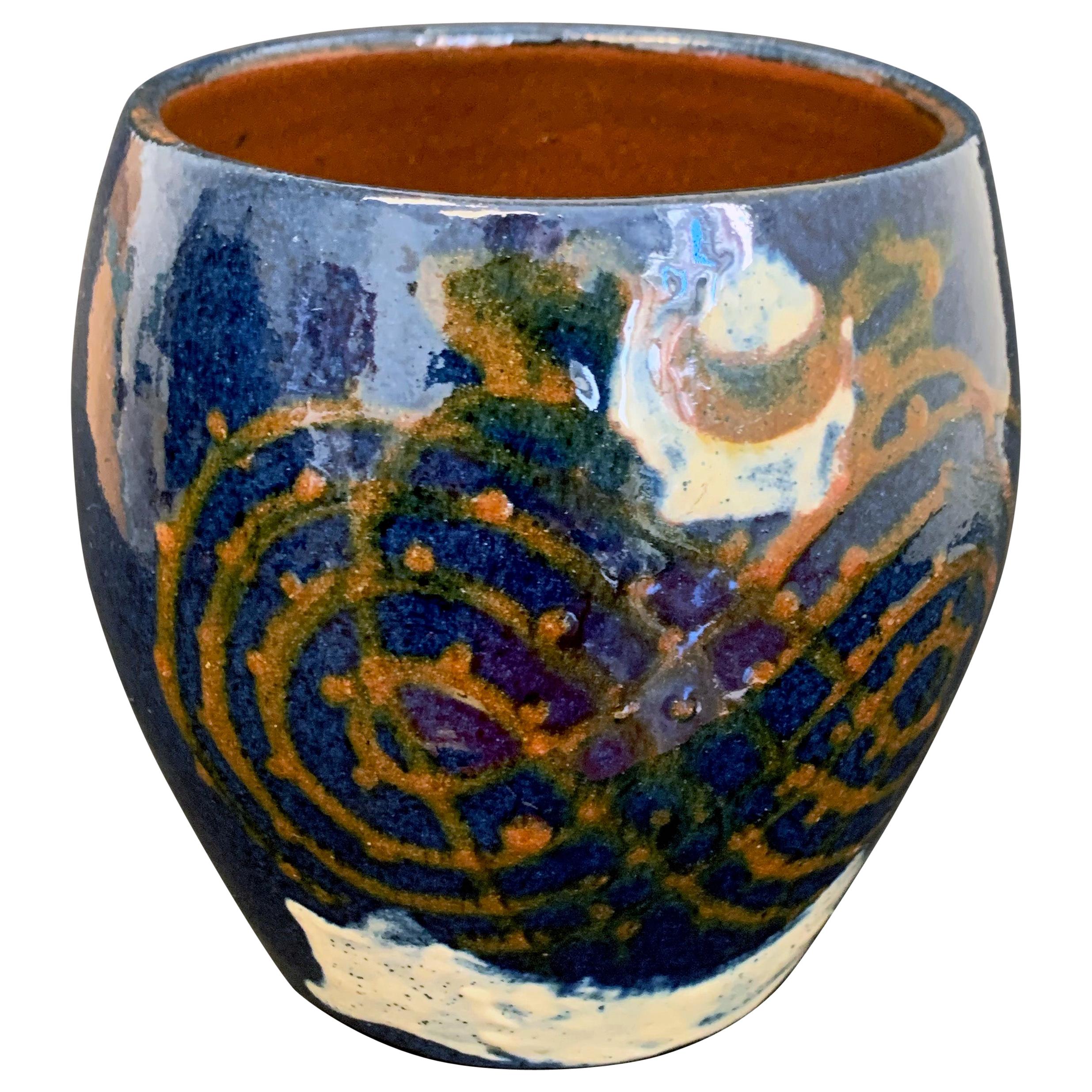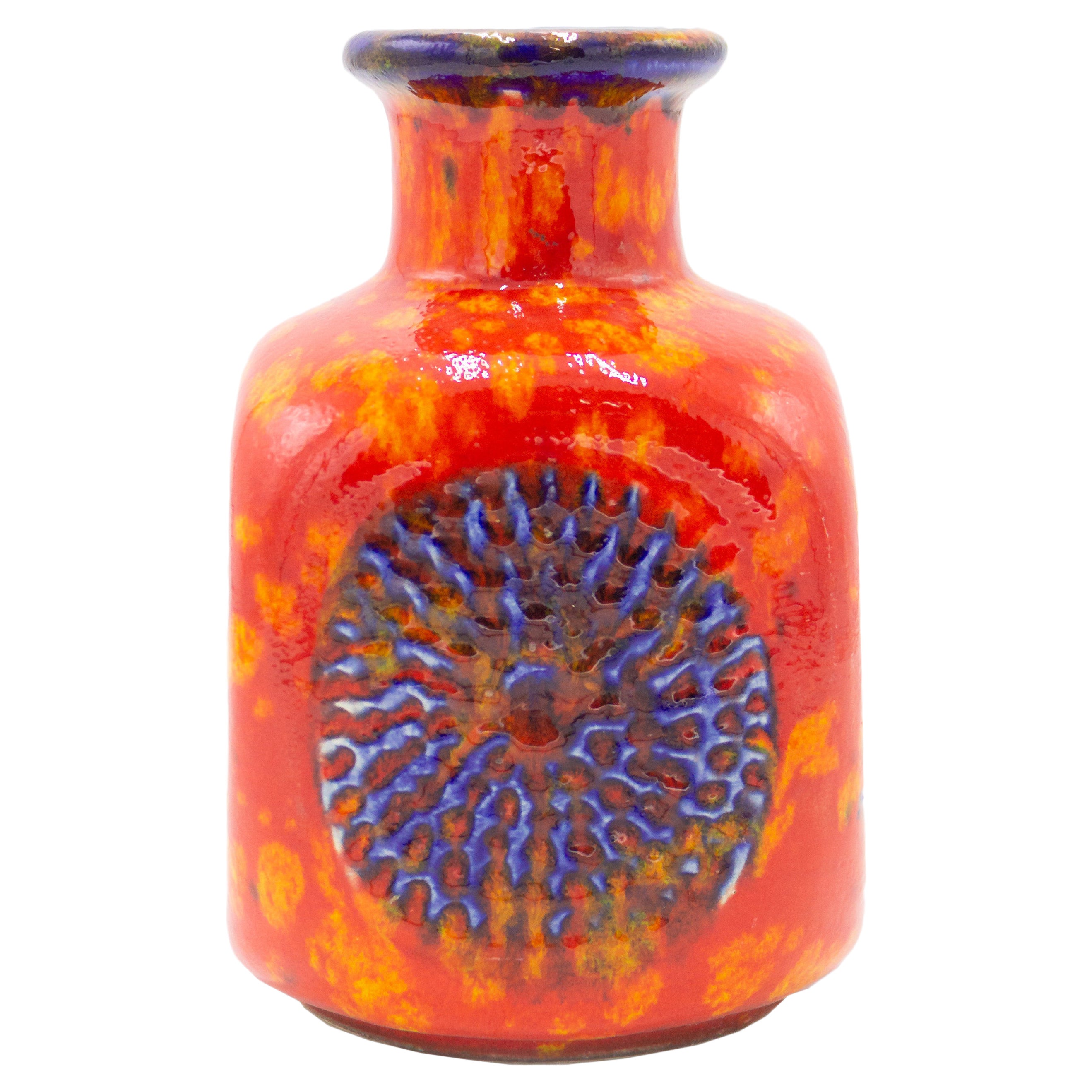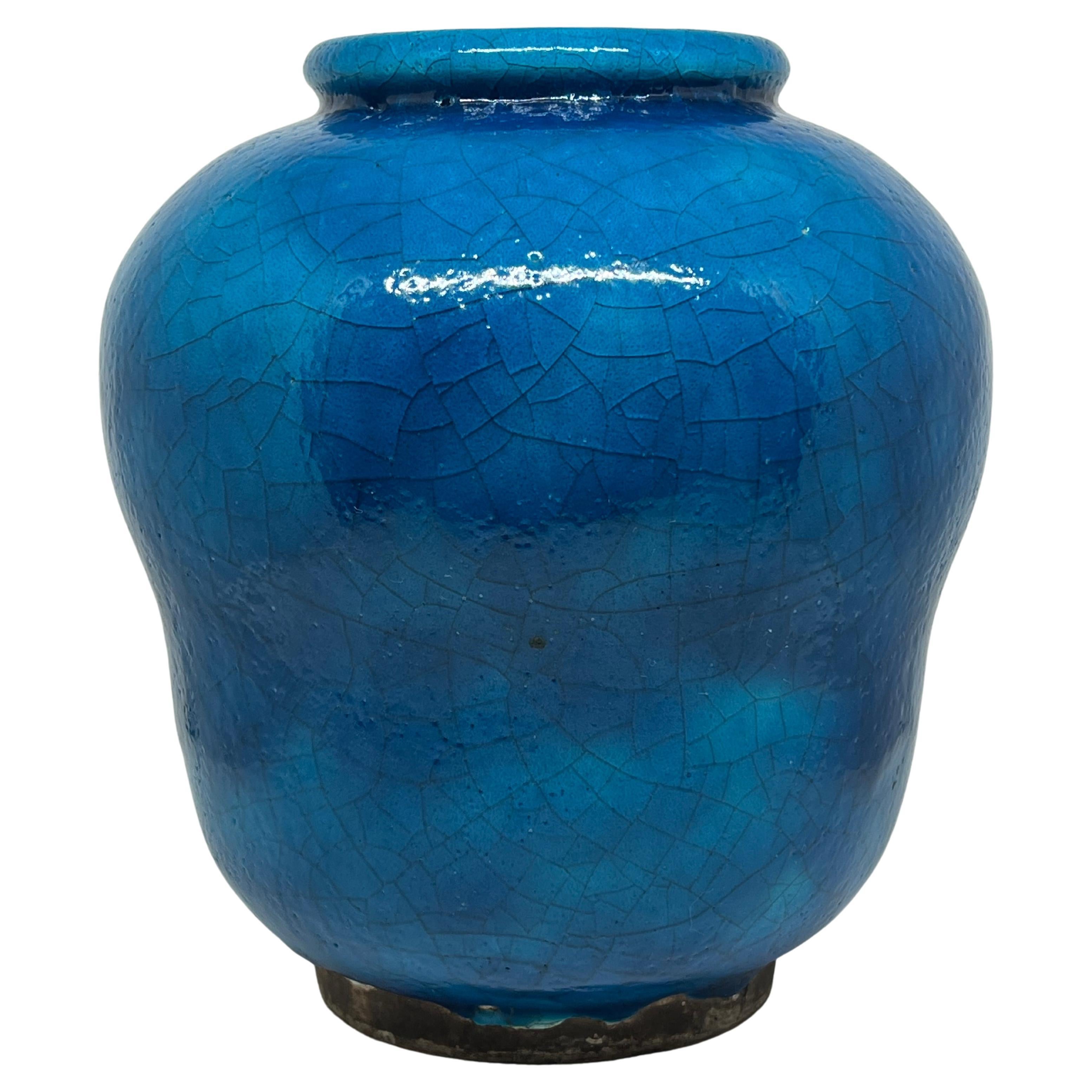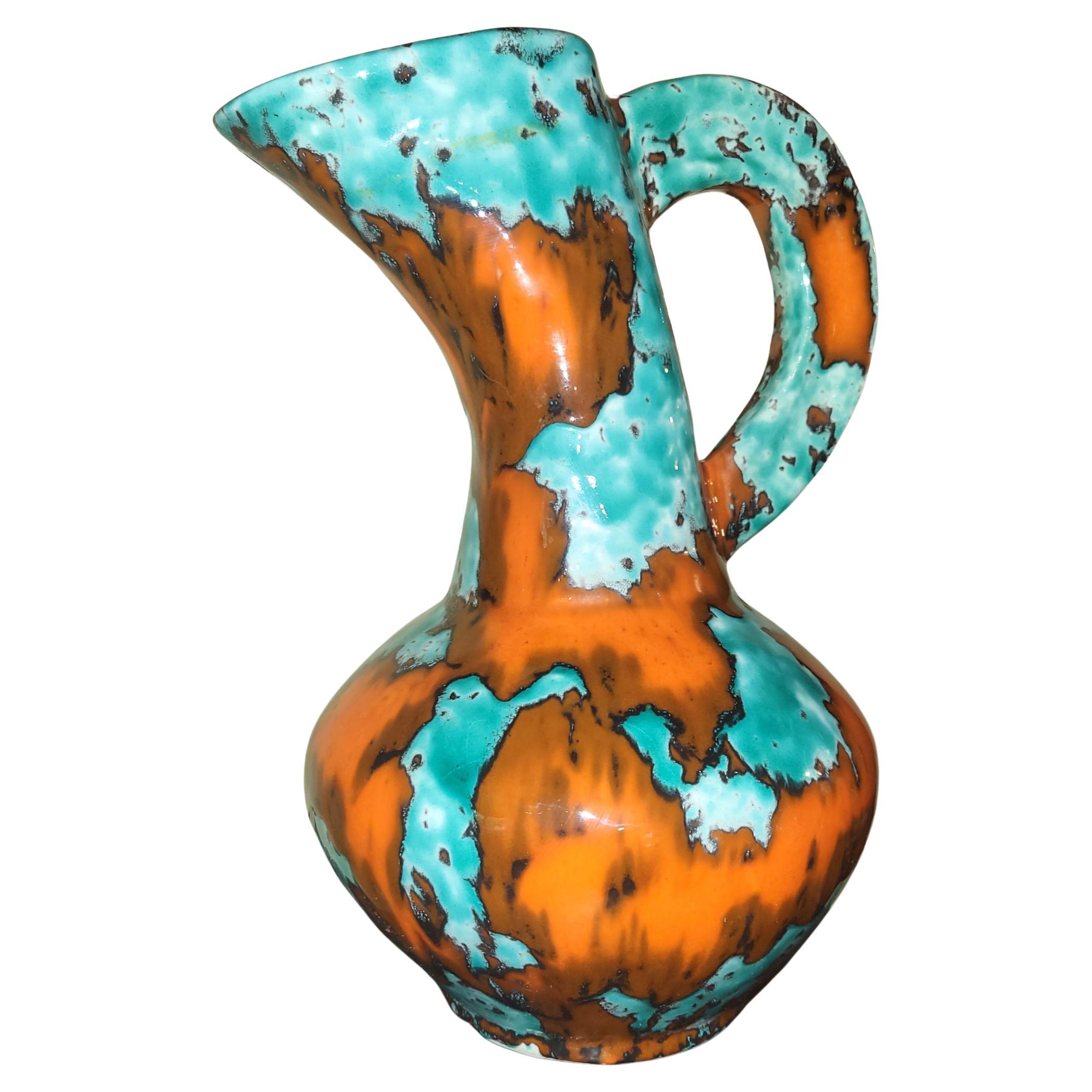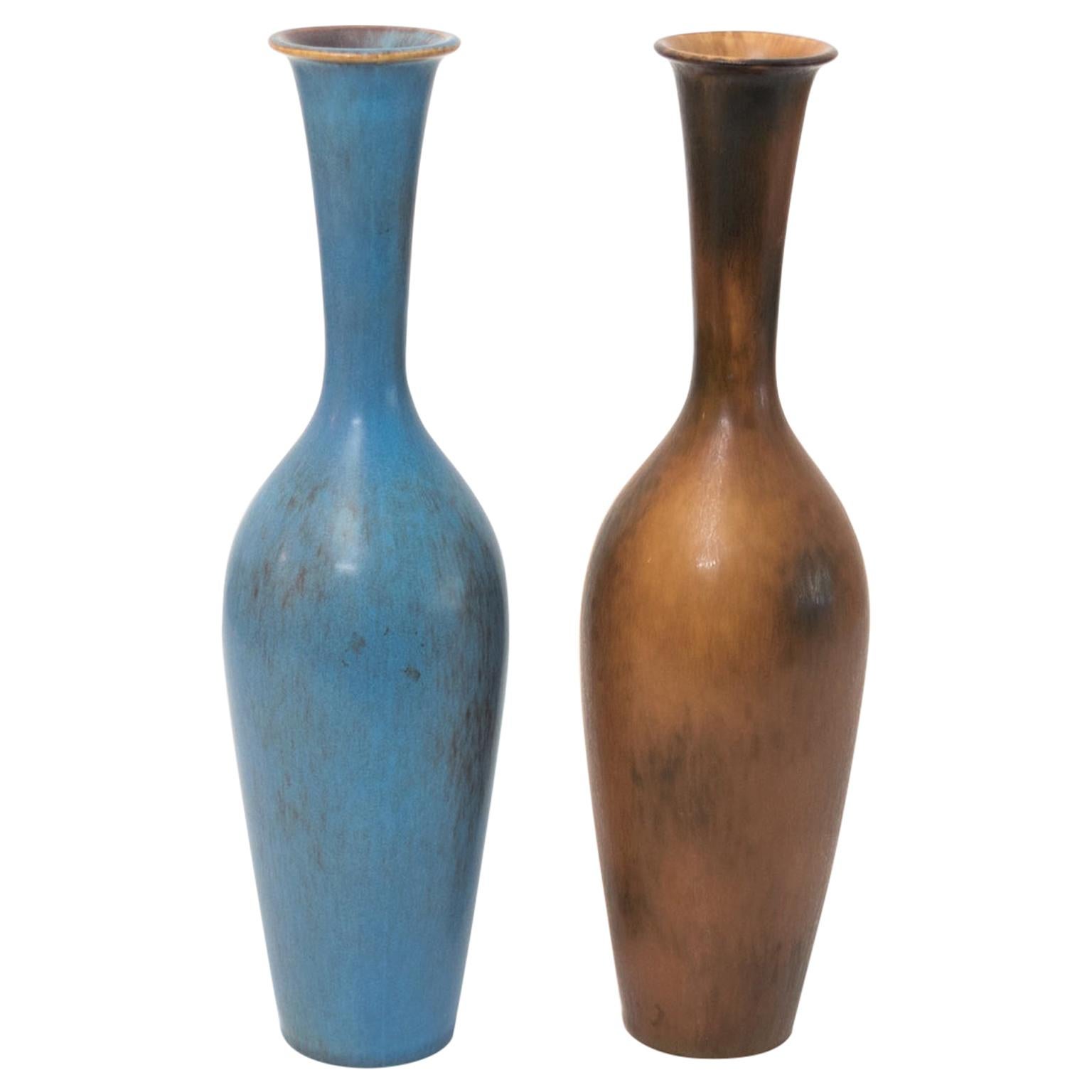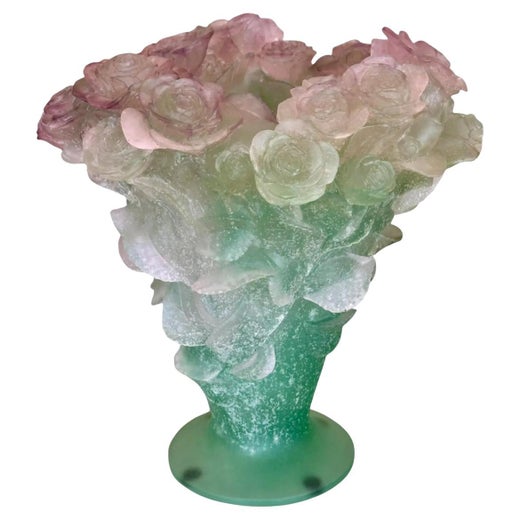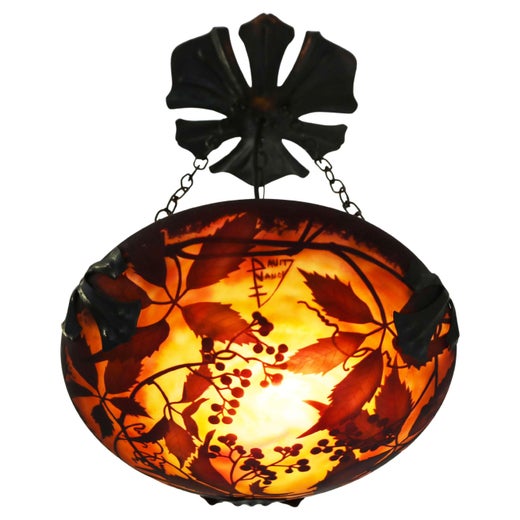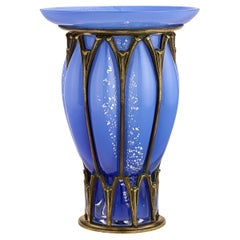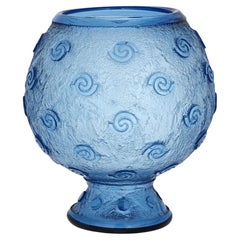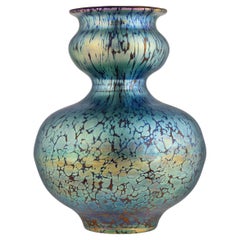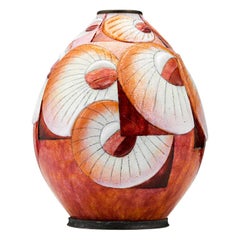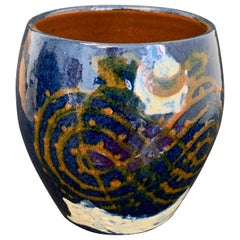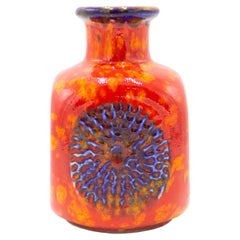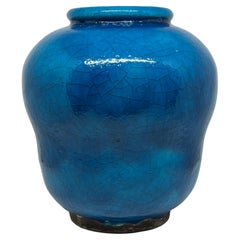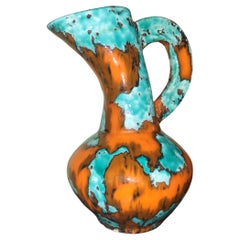Daum and Majorelle Blue and Orange Vase
About the Item
- Creator:Louis Majorelle (Metalworker),Daum (Maker)
- Dimensions:Height: 7.5 in (19.05 cm)Width: 5.5 in (13.97 cm)Depth: 5.5 in (13.97 cm)
- Style:Art Deco (In the Style Of)
- Materials and Techniques:
- Place of Origin:
- Period:
- Date of Manufacture:Circa 1925
- Condition:
- Seller Location:New Orleans, LA
- Reference Number:Seller: 32-05341stDibs: LU891145642252
Daum
For collectors, Daum is a name in the first rank of the French makers of art glass, along with those of Émile Gallé and René Lalique. Led in its early decades by the brothers Auguste (1853–1909) and Antonin Daum (1864–1931), the company, based in the city of Nancy, established its reputation in the Art Nouveau period, and later successfully adopted the Art Deco style.
In 1878, lawyer Jean Daum took over the ownership of a glassworks as payment for a debt and installed his sons as proprietors. Initially, Daum made glass for everyday purposes such as windows, watches and tableware, but the success that Gallé enjoyed at the 1889 Universal Exposition in Paris — the international showcase for which the Eiffel Tower was built — inspired the Daum brothers to begin making art-glass pieces. They produced popular works of cameo glass, a decorative technique in which an outer layer of glass is acid-etched or carved off to reveal the layer below, but Daum became best known for vessels and sculptures in pâte de verre — a painstaking method in which finely ground colored glass is mixed with a binder, placed in a mold and then fired in a kiln.
Though early Daum glass was never signed by individual artists, the firm employed some of the masters of the naturalistic, asymmetrical Art Nouveau style, including Jacques Grüber, Henri Bergé and Amalric Walter (whose first name is frequently misspelled). Daum also collaborated with furniture and metalware designer Louis Majorelle, who created wrought-iron and brass mounts for vases and table lamps. In the 1960s, Daum commissioned fine artists, most notably Salvador Dalí and sculptor César Baldaccini, to design glass pieces. As you see from the works offered on 1stDibs, Daum has been home to an astonishingly rich roster of creative spirits and is today a state-owned enterprise making pâte de verre figurines.
Louis Majorelle
Louis-Jean-Sylvestre Majorelle, more commonly known as Louis Majorelle, was a French artist, metalworker and Art Nouveau designer celebrated for his bedroom furniture, cabinets, chairs and decorative objects.
In 1877, Majorelle moved to Paris from the town of Nancy where he began his studies in painting under Jean-François Millet at the École de Beaux Arts. Following the death of his father, a furniture designer, he returned to Nancy and took over the family workshop. Parisian architect Henri Sauvage designed Majorelle’s house in Nancy, Villa Majorelle, which featured stained glass by Jacques Gruber.
In order to increase productivity and reduce costs — as well as shift the family business’s focus from reproductions of 18th-century furniture such as Louis XV chairs to instead working in the era’s Art Nouveau style — Majorelle integrated modern techniques and processes at his atelier (these changes were in part inspired by innovative glassmaker Emile Gallé).
The workshop became known for Majorelle’s distinctive designs and the pronounced craftsmanship of its offerings. There were tables made from mahogany and ormolu that featured handsome bronze mounts and marquetry, table lamps that shared common ground with the prized designs associated with Tiffany Studios, and decorative pieces that Majorelle produced in partnership with Daum, a revered manufacturer of French art glass.
The work was very much characterized by the botanical motifs and curvaceous silhouettes of Art Nouveau design, and the business was successful. Majorelle produced a range of items during the early 1900s and was a participant in the 1900 Paris Exposition as well as the Exposition de l'Ecole de Nancy in 1903.
In 1916, a devastating fire broke out in Majorelle’s factory on the rue du Vieil-Aître in Nancy. It destroyed all of the company’s awards, sketches, molds, equipment and archives of Majorelle’s work. In 1917, destruction again shook his business when his shop on the rue Saint-Georges was bombed by German aircraft. The designer marched on — he relocated to Paris where he shared a workspace and created vases and other vessels in the Art Deco style before he moved back to Nancy. Majorelle designed the Nancy Pavilion at the International Exhibition of Modern Decorative and Industrial Arts in 1925 with Alfred Lévy. He died in 1926.
Find antique Louis Majorelle cabinets, seating and decorative objects on 1stDibs.
- ShippingRetrieving quote...Shipping from: New Orleans, LA
- Return Policy
More From This Seller
View All20th Century French Art Deco Vases
Wrought Iron
20th Century French Art Deco Vases
Art Glass
Antique 19th Century Czech Art Nouveau Vases
Art Glass
20th Century French Art Deco Vases
Copper
20th Century French Art Deco Vases
Glass
20th Century French Art Deco Vases
Copper, Silver Leaf, Enamel
You May Also Like
Vintage 1940s French Modern Vases
Ceramic
20th Century German Modern Vases
Ceramic
Vintage 1920s French Art Nouveau Vases
Faience, Pottery
Mid-20th Century French French Provincial Vases
Ceramic
Mid-20th Century Scandinavian Scandinavian Modern Vases
Ceramic
20th Century French Art Deco Vases
Pottery
Read More
Paul Revere Crafted This Silver Coffee Pot 250 Years Ago
Perhaps best known as a Revolutionary War hero, Revere was also an accomplished silversmith, and this pot is now available on 1stDibs.
Degas Portrayed These Exuberant Ukrainian Dancers with ‘Orgies of Color’
Discovered in Parisian cabarets, the performers reenergized the artist’s practice.
